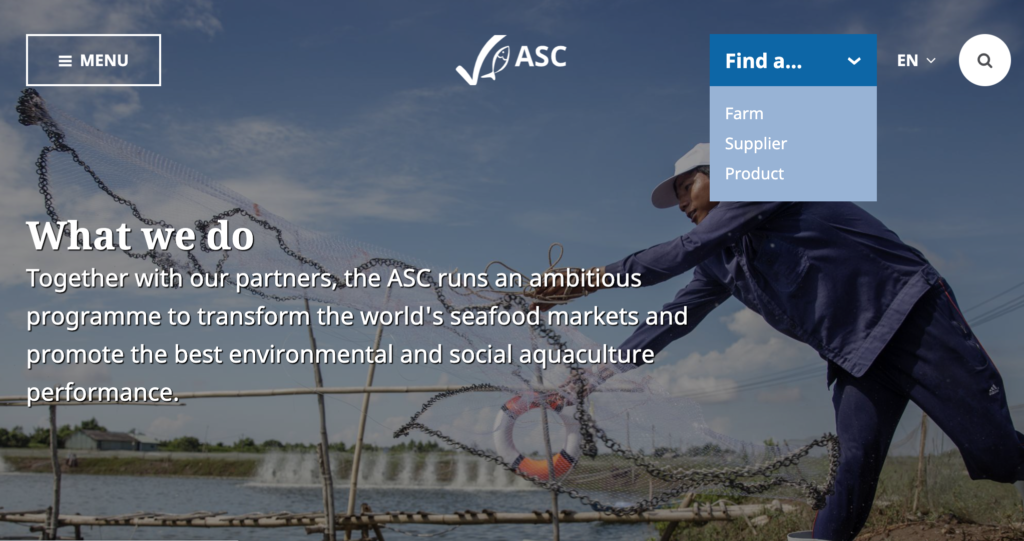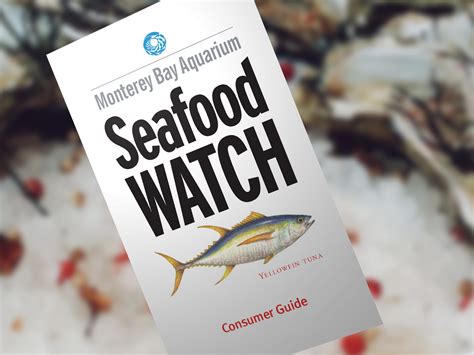Sustainability and our mission
Our mission here at Royal Hawaiian Seafood is to be a “100% transparent and sustainable seafood supplier”. In order for us to determine whether a product is caught or farmed sustainably, we utilize a variety of third-party programs and resources. This blog will outline the similarities and differences between four organizations that promote sustainable and environmentally conscious farming and fishing practices.
The Monterey Bay Aquarium Seafood Watch program gives consumers recommendations on both wild and farmed seafood species and provides ratings as to which products meet their sustainability standards. Fish Choice works in collaboration with the Monterey Bay Aquarium program and individual businesses, like Royal Hawaiian Seafood. What makes them unique is that Fish Choice gives you information about seafood companies and the sustainability of their products. The Marine Stewardship Council (MSC) certifies fisheries that encapsulate best practices while fishing for wild seafood. Finally, the Aquaculture Stewardship Council works with farmed seafood producers to regulate and certify those who practice sustainable aquaculture techniques. A key difference between the programs is MSC and ASC work together to certify specific company brands that harvest and catch seafood whereas the Monterey Seafood Watch Program focuses on recommendations for specific species. For a more detailed explanation of each individual organization see below.
Monterey Bay Aquarium Seafood Watch
For the past 20 years, the Monterey Bay Aquarium (MBA) Seafood Watch program has worked with multinational businesses, non-governmental organizations and government agencies to publish information which helps guides people in making decisions to preserve the health of marine ecosystems as well as protecting vulnerable wildlife. MBA Scientists are dedicated to researching the sustainability of farmed and wild seafood, which in turn helps guide consumers in making ecologically informed decisions about the products they purchase. Their website allows you to filter seafood recommendations by species name, harvest method, location, and/or rating. This is a great tool for basic searches on hundreds of seafood products.
The Seafood Watch Program conducts its assessment of seafood operations around the world using analysts and Seafood Watch scientists, in collaboration with scientific, government, industry, and conservation experts. They use a rigorous eight-step process to determine the rankings of seafood operations. For fisheries, the program assesses impacts on target species, other species, habitat, ecosystem, and overall management of the fishery. With salmonoid fisheries, in particular, the watch program also evaluates the impacts of artificial production due to their unique life characteristics and behavior. In regard to aquaculture operations, they assess the impacts of effluent, habitats, wildlife and predator interactions, chemical use, feed production, escapes, the introduction of non-native organisms, disease, the source stock, and general data availability.
Seafood Watch recommendations use a color-coded system to show you which seafood items are green Best Choices or yellow Good Alternatives, and which ones you should Avoid (red).
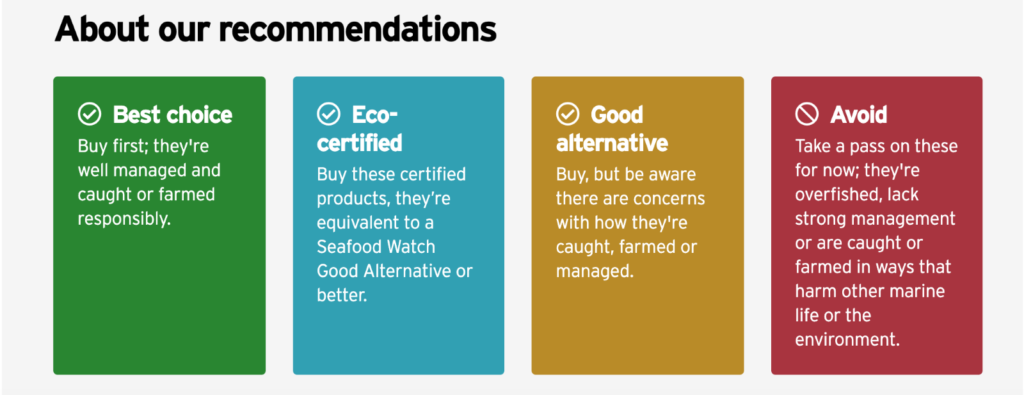
The programs that Monterey Seafood Watch assesses are those which are identified as key sources of seafood in the U.S. market during their annual prioritization exercise. Companies can also pay to have the program work on improving their practices and commission a report on the state of sustainable seafood. To ensure their assessments are impartial their process is aligned with the ISEAL Code of Good Practice.
Fish Choice
Fish Choice is an online platform that allows businesses like ours to create a personalized dashboard to track and mange seafood sustainability information. You can view Royal Hawaiian Seafood’s dashboard (here). The business dashboard provides information on specific brands such as product origin, harvest method, and sustainability rating. Unlike the Monterey Seafood Watch program, Marine Stewardship Council, and Aquaculture Stewardship Council, Fish Choice does not give assessments to programs. Fish choice is guided by the recommendations by Monterey Bay Aquarium in collaboration with individual businesses to help inform consumers on purchasing sustainable seafood that is harvested or farmed in the United States. Through their website you may look through the products of specific seafood busineses while also filtering for seafood species, origin, catch method, and sustainability ratings. Fish Choice is a great resource if you are looking for a compiled list of products that businesses have to offer.
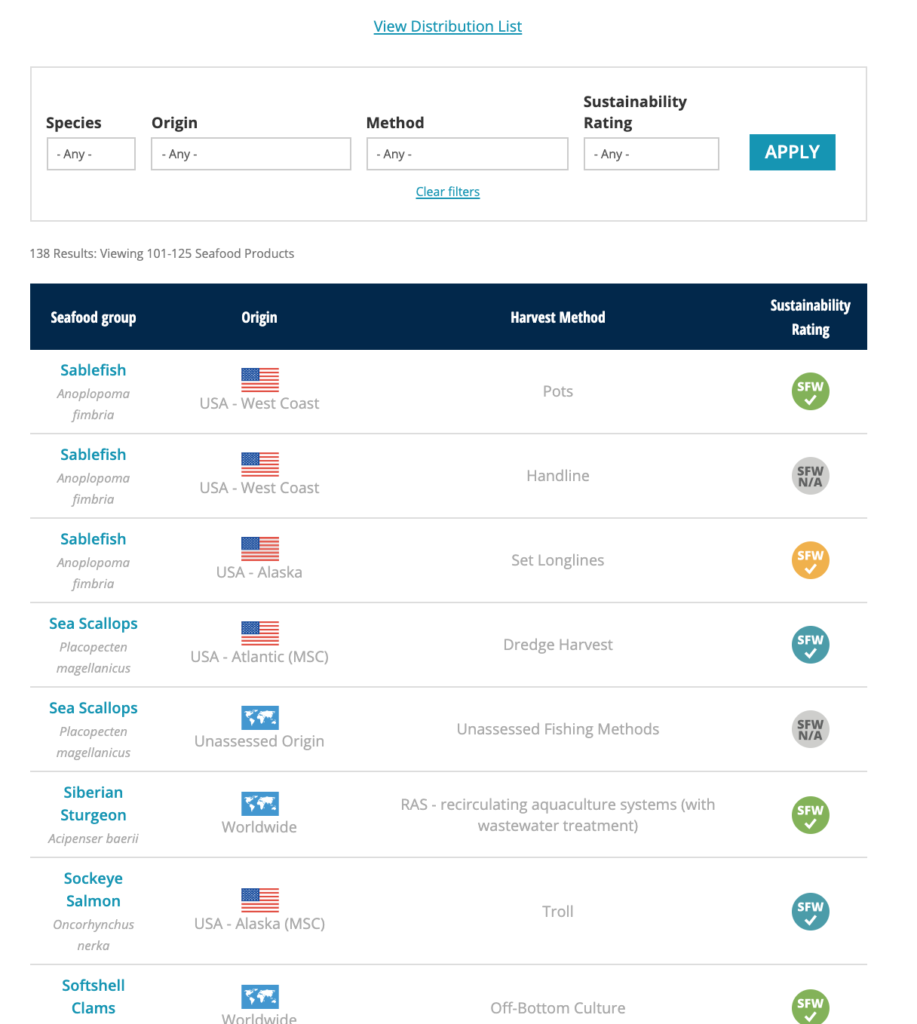
Marine Stewardship Council (MSC)
The Marine Stewardship Council (MSC) is a global, science-based nonprofit dedicated to ending overfishing worldwide. MSC certifies well-managed fisheries that exhibit sustainable fishing practices for wild-caught products. Certification to the MSC Fisheries Standards is voluntary and open to all fisheries who catch marine or freshwater organisms in the wild. It is important to note the cost of certification can vary from USD $15,000 – $120,000. The MSC fisheries standard has three core principles: sustainable fish stocks, minimizing environmental impact, and effective fisheries management.
To identify the sustainability of fisheries, MSC uses a 12–18-month process which assesses fisheries across 28 detailed criteria. The 28 performance indicators sit under the three core principles described above. Each MSC-certified fishery is independently assessed by third-party experts on its specific impacts to wild fish populations and the ecosystems they are part of. The third-party independent assessment team is made up of experts in fisheries management. Making improvements are required for fisheries to maintain certification, 92% of certified fisheries made at least one improvement. You can identify MSC-certified products by the blue fish label stamped on the products at your seafood supplier. Alternatively, using their website you may search for MSC-certified fisheries and products on their website. To view past reports you can click this link (https://www.msc.org/about-the-msc/reports-and-brochures).
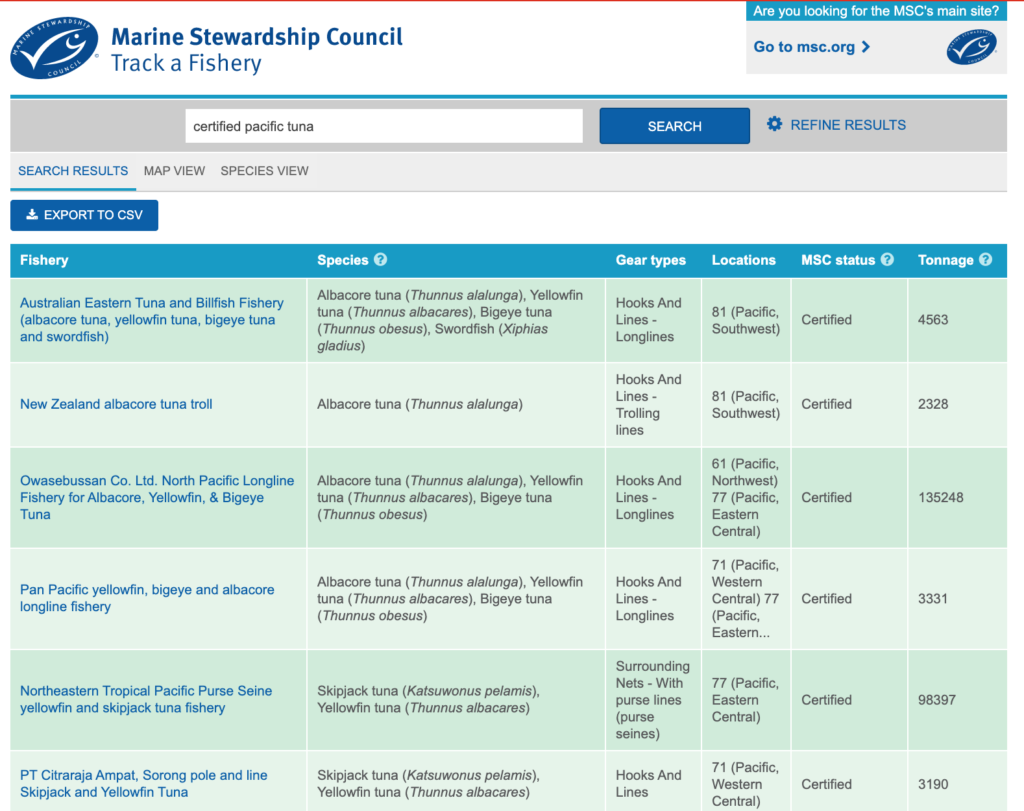
Aquaculture Stewardship Council (ASC)
In contrast to the MSC certification of wild products, the Aquaculture Stewardship Council (ASC) certifies farmed seafood products. ASC recognizes the threat of increased production required to feed the growing population. They suggest that we need to urgently accelerate the transition to sustainable and responsible production. ASC promotes industry best practices to minimize the environmental and social footprint of commercial aquaculture. Their standards set strict requirements for responsible farming, which encourage seafood producers to minimize the key environmental and societal impacts of aquaculture.
The ASC standard for responsible farming have been organized around seven core principles: 1. legal compliance with nation and local laws and regulations 2. Preservation of natural habitats, local biodiversity and ecosystem 3. Preservation of the diversity of the wild population 4. Preservation of water resources and quality 5. Responsible use of feed and other resources 6. Improved fish health and controlled and responsible use of antibiotics and chemicals 7. Farms to be socially responsible toward their workers and the local community.
The current eleven ASC standards cover 17 species groups, which include a mix of finfish and shellfish. There is also a joint ASC-MSC standard for seaweed. ASC standards are developed and implemented according to ISEAL guidelines – multi-stakeholder, transparent, incorporating science-based performance metrics. All audits and standards are also subject to public consultation meaning that anyone can have their say. For some farm audits, local and indigenous are proactively approached for their input as ASC also has investments in promoting social
Like the MSC program, consumers can identify ASC-certified products by the light blue label stamped on seafood products or go to their website and search for a farm, supplier, or product. You can view their seafood farm reports through this link (https://www.asc-aqua.org/resources/document-resources/).
